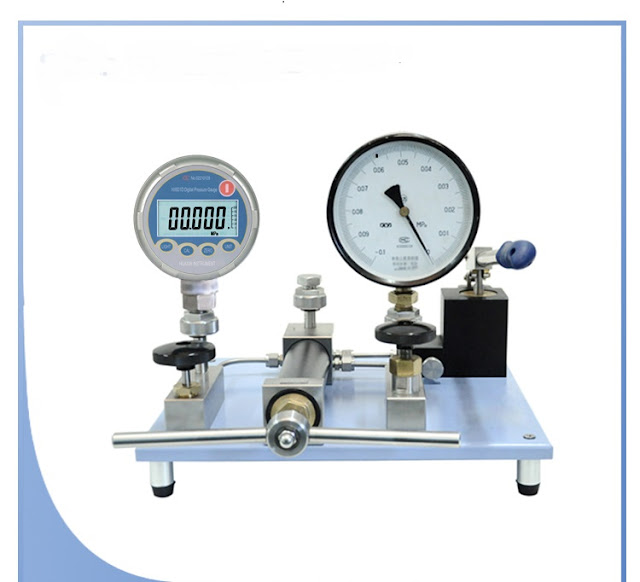The Crucial Role of Differential Pressure Calibration in Industrial Settings
In the fast-paced and ever-evolving world of industrial settings, accuracy and reliability are paramount. From manufacturing plants to chemical processing facilities, precise measurements are essential for maintaining operational efficiency, ensuring safety, and preventing potential hazards. One crucial aspect of achieving accurate measurements is differential pressure calibration.
In this blog post, we will delve into the significance of differential pressure calibration in industrial settings, understanding the calibration process, the benefits it brings, the steps involved, and how to choose the right calibration equipment and service provider.
Understanding Differential Pressure Calibration:
Differential pressure calibration is a process that ensures the accuracy and reliability of pressure-measuring equipment in measuring the difference in pressure between two points. This calibration process is vital for various industries, including oil and gas, pharmaceuticals, HVAC, and many more. It allows for the precise monitoring and control of processes, making it an indispensable practice in industrial settings.
Key Components Involved in the Calibration Process:
To fully comprehend the differential pressure calibration process, it is essential to familiarise ourselves with the key components involved. These components include the following:
- Pressure Transmitters: These devices measure the pressure at specific points in a system and convert it into an electrical signal. They play a critical role in differential pressure measurement and require regular calibration to maintain accuracy.
- Calibration Standards: These are reference devices used for calibrating pressure transmitters. Calibration standards are meticulously calibrated and traceable to national or international standards, ensuring accuracy and reliability in the calibration process.
- Calibration Equipment: This includes various tools and instruments used during the calibration process, such as pressure gauges, pressure controllers, and calibration software. These tools help simulate and control pressure conditions to ensure accurate calibration.
Benefits of Differential Pressure Calibration in Industrial Settings:
Now that we have a solid understanding of differential pressure calibration and its components, let's explore the benefits it brings to industrial settings.
- Ensuring Accurate Measurements and Reliable Data:
Accurate measurements are crucial in industrial settings as they directly impact the quality of products, process efficiency, and overall operational performance. By regularly calibrating differential pressure equipment, industries can ensure accuracy and reliability in their measurements, leading to precise data and informed decision-making.
- Enhancing Safety and Preventing Potential Hazards:
Industrial processes often involve hazardous materials, extreme temperatures, and high pressures. Any miscalculations or inaccuracies in pressure measurements can have severe consequences, including accidents, equipment failures, and even fatalities. Regular differential pressure calibration ensures that safety systems are functioning optimally, preventing potential hazards and ensuring the well-being of workers and the surrounding environment.
- Extending the Lifespan of Equipment and Reducing Downtime:
Industrial equipment, especially those subjected to high pressures and varying conditions, is prone to wear and tear. Regular calibration of differential pressure equipment helps identify any potential issues or deviations, allowing for timely maintenance and repairs. By addressing these issues promptly, equipment lifespan can be extended, reducing downtime and minimising costly repairs or replacements.
Steps Involved in Differential Pressure Calibration:
To ensure accurate calibration, several steps need to be followed during the differential pressure calibration process. These steps include:
- Preparing the Equipment for Calibration:
Before commencing the calibration process, it is essential to prepare the equipment properly. This involves cleaning the equipment, removing any contaminants, and ensuring that it is in proper working condition.
- Conducting the Calibration Process Accurately:
The actual calibration process involves comparing the readings of the pressure transmitter against the calibration standards at various pressure points. This step requires precision and attention to detail to ensure accurate calibration.
- Verifying and Documenting the Calibration Results:
After the calibration is complete, it is crucial to verify the results and document them accurately. This documentation serves as a record of the calibration process and can be used for future reference or audits.
Choosing the Right Calibration Equipment and Services Provider:
To achieve accurate differential pressure calibration, it is vital to choose the right calibration equipment and service provider. Consider the following factors when selecting calibration equipment:
- Accuracy and Traceability: Ensure that the calibration equipment meets the required accuracy standards and is traceable to national or international standards.
- Compatibility: Verify that the calibration equipment is compatible with your pressure transmitters and other devices, ensuring seamless integration and accurate calibration.
- Reliability and Reputation: Research and evaluate reputable calibration service providers with a proven track record in delivering accurate calibrations. Look for certifications, customer reviews, and industry recognition to gauge their reliability.
Conclusion:
Differential pressure calibration plays a crucial role in industrial settings. The accuracy and reliability of pressure measurements are vital for operational efficiency, safety, and preventing potential hazards. By regularly calibrating differential pressure equipment, industries can ensure accurate measurements, enhance safety, extend equipment lifespan, and reduce costly downtime. Choosing the right calibration equipment and services provider is equally important to achieve accurate calibrations. As we conclude, let's emphasize the importance of prioritising regular differential pressure calibration for optimal performance in industrial settings.


Comments
Post a Comment